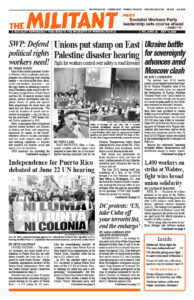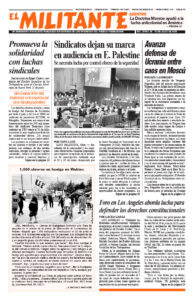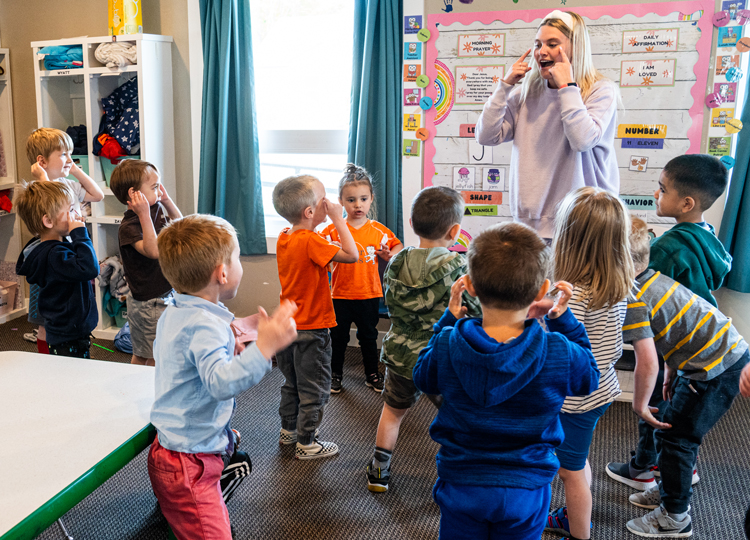From plummeting math and reading test scores for teenage students, to the government’s plan to slash funds for child care, to rising health care costs alongside hospital closings — over 175 in rural areas over the last 15 years — these are all symptomatic of the deteriorating conditions of life facing working people and their families as the crisis of capitalism deepens today.
Test scores recently released by the National Assessment of Educational Progress indicate the performance of 13-year-olds in the U.S. dropped to the lowest level in decades. The average math score is the same as it was in 1990, while the average reading score matches 2004. The results were class-divided, with scores for students from lower-income, working-class families declining the most.
The COVID pandemic exacerbated the drop, with many school systems closed for over a year. But the decline began over a decade ago. Since the end of the pandemic, the capitalist rulers have done precious little to reverse the slide.
Amid today’s social media mania, the number of students who reported “never” or “hardly ever” reading for fun jumped to 31% over the last school year, up by 9% from youth tested three years earlier.
Another big concern — especially for women workers — is the expense and availability of day care.
Melissa Guzman with New York Group Family Day Care in Upper Manhattan has been running pre-K child care centers for 16 years. Bureaucratic red tape and cutbacks by the city government have meant bankruptcy for many child care providers, she told the Militant June 23. “The city is paying for child care for half a day, but we take care of children the whole day. This squeeze is not sustainable.”
“We don’t charge high rates. We take care of children from the families of working people,” she said. “There’s nothing more important than caring for a young child.” Guzman and her husband used to run eight centers, each with 12 children, now they’re down to two.
Announcing his 2023 budget, Democratic Mayor Eric Adams proposed cutting funds currently earmarked for child care. And many times the city “pays two to three weeks after care is given,” Guzman said, making it difficult to cover expenses.
Federal gov’t cuts child care funds
The Joseph Biden administration is shutting down its pandemic relief program for child care in September, a move that will have a disastrous effect on working people. Child care could be disrupted for 3 million children, close to a third of all those in child care, according to a report by Century Foundation. The chop in funds will mean layoffs and wage cuts for those still working, and many centers will be forced to close.
The cost of covering private child care is increasingly unsustainable for the working class. In fact, half of parents spend more than 20% of their household income on child care, and that’s before the government fund cutoff in September.
Some providers say it’s unconscionable to raise costs on parents. “Raise tuition? Not in West Virginia, not in this economy, not here,” Lorna Adkins, who runs Growing Places from her home in Huntington, told the New York Times.
But she admitted that losing the $3,200 a month from the government she got last year, combined with new “woke” regulations imposed on them, she sees no other option but to retire.
“There are a lot of people in child care that are going to close down because of this,” she said.
Under capitalism the medical industry is exactly that — a profit-driven business for hospital bosses and the giant pharmaceutical monopolies. Many hospitals prioritize collecting medical debts by getting court orders to garnish patients’ wages and any other sources of income. Some go even further —refusing care for anyone with outstanding medical bills.
Allina Health System, with more than 100 hospitals and clinics in Minnesota and Wisconsin, is among those keeping patients who owe money out of their facilities. They’ll treat you in their emergency rooms — that’s required by law — but if hospitalization or follow-up care is needed, you’re not allowed back. Twenty percent of hospitals nationwide have debt-collection policies that allow them to refuse care, KFF Health News reported. Many of these claim they are “nonprofits.”
An estimated 100 million people in the U.S. have medical debts. Their bills make up about half of all outstanding debt in the country.
On top of this, more than 600 rural hospitals — nearly 30% of all such hospitals nationwide — are at risk of having to shut down, U.S. News and World Report reported in January.
“How many working Americans need food stamps? The answer may surprise you,” headlined a May 30 article on MarketWatch. More than 42 million people participate in the food stamp program today, up by 7 million since 2019.
But the recent debt-ceiling deal reached by the White House and Congress adds onerous new requirements to get food stamps. Now, anyone without a job under the age of 55 who doesn’t have children must either go get one or participate in a training program for at least 80 hours a month to be eligible for food stamps. Otherwise, they can receive benefits for only three months in any three-year period. Of course, the government does nothing to make available any well-paying jobs to these workers.
It falls to the union movement to champion a fight for these social rights. At the heart of the fight is a job for all who want one, at union-scale pay.


